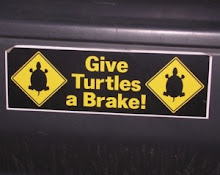A few years ago I adopted a couple of dogs because my spouse wanted dogs as pets. I was always a cat person because they were more economical to keep and you could retain some independence with cats that you cannot have with dogs. I could join coworkers for a drink after work or go away for an overnight visit and not need to get up so blessed early to walk the dogs at the beginning of the day. But regardless I agreed to the dogs provided they were small, medium to low energy dogs. So I was given the task of finding a pet dog and eventually I found these two rescue mutts. These two have set me on a very interesting journey over the past four years.
I have been often accused of not doing things half-way; that when I commit to a project that I always give it my best or at least put a damn good effort into doing it right. These two are no exception to my rule, and I have been spending time learning about these animals and applying what I learned to raising them. I was fortunate to have been given a list of literature to read by a well respected dog walker and trainer in the Ottawa area and have had (and hope to continue to have) the privilege of training with her as a sort of apprentice relationship.
Since I have been learning so much and have seen how significantly the dog world has changed since the 1980's when I worked as a volunteer at the SPCA, I thought I would share some of this info with anyone interested. This blog will also work as a record of things I want to remember and have the option to refer back to whether it is terminology, behaviour modification, nutrition, training and anything else canine oriented. There is so much to learn and today there is so much information at our finger tips!
When it comes to dogs most people immediate thing of the Dog Whisperer. When Cesar Millan migrated to America his dream was to be the best dog trainer there was. I believe his heart was in the right place but as someone wisely put it, he ended up under NatGeoWild's thumb instead. Cesar's techniques remind me of those I was taught in the 80's while working at the SPCA and those reinforced in the late 90's when I took dog obedience courses with my family pet.
I remember a concept that neuroscientist Joseph LeDoux had surmised was: Fear is the easiest thing to condition in an animal and the hardest thing to resolve. And that is why I think old way of training was successful. Dogs were trained to avoid those things they fear. For example walk them using a prong collar and they don't pull to avoid pain. Use a choke chain collar and snap it when the dog disobeys... the dog learns what to do to avoid pain. When I watch Cesar Millan, I see this type of training. Today, training techniques have changed 180 degrees and the more I learn the more amazed I become and the more I want to emerge myself in THIS world.
I admit, when my current pups came into my life, one of the first books I read was "How to raise the Perfect Puppy" but Cesar Millan (the second one was "Before & After Getting Your Puppy" by Ian Dunbar. What a difference!). I picked and chose some of Cesar's theories and techniques and applied them to the puppies in their early days. I say pick and choose because from day one I knew that I didn't want to build my relationship with them on fear, I wanted to build my relationship with these dogs on trust, respect and affection. I accepted Cesar's recommendation of exercise, discipline and then affection. We walked a couple times a day and I indicated what behaviours are not acceptable and when they complied they were rewarded with affection and often treats. i.e., when they wanted to jump on me I would indicate no but using "Eh! Eh!" (a unique sound that was used only for them) and when they sat I praised them with affection. I later saw a video by Sophia Yin doing much the same (less the Eh! Eh!) and seeing how highly she is regarded in the dog world, I felt that I was at least somewhat on the right track.
Even though I disagree with Cesar Millan`s training techniques I do recognize the benefits that he has brought to the dog world. And in light of the witch hunt that was happening with regards to his 'Animal Abuse' case, I think it is important to remember how he has positively contributed to the dog world. These are what I see as his strengths:
- Taught us that dogs psychology differs from human psychology
- He promotes adopting rescued dogs
- He is one of the biggest advocates for pit bulls (a big plus in my books!)
- Teaches us dogs are not disposable items
- Teaches us dogs require training; need to learn what is expected of them when living with us
- Brings awareness to the issues associated with dog racing and the dog abuse in this industry
- Has brought awareness to dog fighting and how unacceptable it is and that even these dogs can be rehabilitated
- Brought awareness to puppy mills and the damage they do
- Teaches us how our own energy and body language affects how a dog behaves
- Teaches us that undesirable behaviours in dogs can be changed (though there are ways other than his).
I am sure there are many more benefits but these are a few off the top of my head.
So leaving Cesar Millan's training techniques behind, lets discuss other training options to accomplish what we want from our canine friends...
Labels: Dogs


